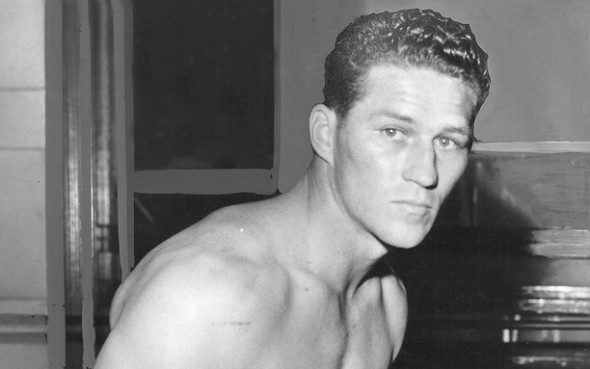
By David Eskenazi and Steve Rudman
Harry Kid Matthews (Dec. 9, 1922-March 11, 2003) fought 103 times as a professional, winning a vast majority (90 with 61 KOs), but is remembered most for the one-round thrashing he absorbed on July 28, 1952, when, in the words of one New York sports writer, Matthews became the most thoroughly knocked-out boxer ever.
Exactly how — and why Matthews, then the pride of White Center, wrangled an opportunity to become the most knocked-out boxer ever, fascinated, even confounded, everyone associated with the sport at the time, and for many years later.
Heading into his 10-round, heavyweight elimination fight with Rocky Marciano, then 41-0, at Yankee Stadium, with the winner guaranteed a title shot against champion Jersey Joe Wolcott, Matthews had done little to justify his sudden rise to boxing prominence.
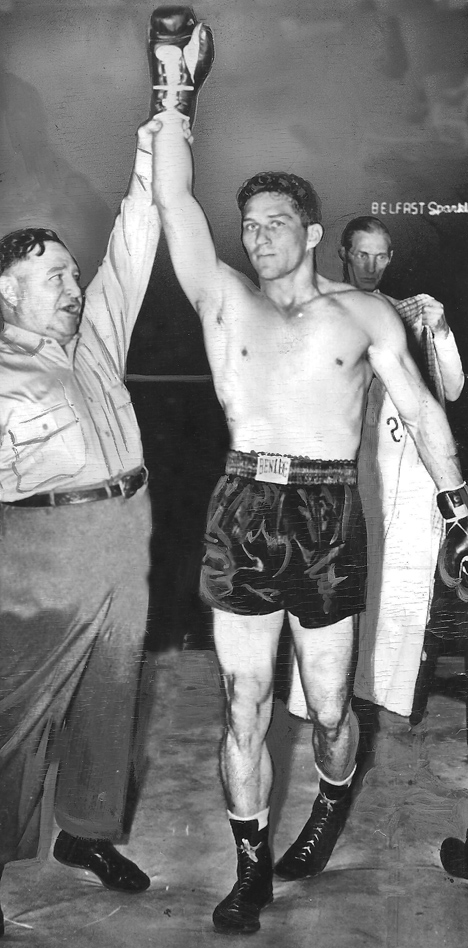
The World Boxing Club, which sanctioned title fights in those days, did not have Matthews listed among its top 10 contenders. In fact, at 180 pounds Matthews really was a blown-up middleweight who had to snarf pies and ice cream to resemble a light heavyweight. And while Matthews had won 37 consecutive fights, he had mainly plowed through, as one newspaper put it, a spate of stiffs.
The best that could be said for Matthews was that he might be able to stay with Marciano for a few rounds if he could maneuver the savage swinger from Brockton, MA., into a style of fight that did not suit him. The worst that could be said: it was only a matter of time before Matthews jaw got in the way of one of Marcianos fists.
In the weeks before what one scribe called a monstrosity of a mismatch, even Matthews confided in friends that he wasnt certain he belonged in the ring with Marciano. Most of Matthews supporters agreed, concluding that Matthews never should have been paired against Marciano, and would not have been without the spectacle of bluster spewed across the continent by the man who trained, managed and promoted him, a Machiavellian schemer named Deacon Jack Hurley.
A native of Emmett, ID., near Boise, and the son of a blacksmith, Matthews first crossed paths with Hurley in the summer of 1949, a year in which Matthews seriously considered abandoning a sport he had taken up at the age of nine, at his fathers urging, after a schoolyard bully turned Matthews nose to pulp.
Matthews fought as an amateur until the age of 14, when he accepted his first fight-for-pay engagement. Forever after, everyone called him Kid.
Kid Matthews moved to Seattle as a late teen, eventually establishing himself as a main-event fighter after hooking up with Los Angeles-based manager George Blake. Fighting at 166 pounds, Matthews worked his way into the national middleweight picture on Sept. 9, 1942, when he scored a 10-round majority decision over Seattles Al Hostak, a former middleweight champion, at the Civic Ice Arena.
Matthews then ventured to California where he sustained unexpected losses to middleweight contenders Jack Chase and Eddie Booker, the latter defeat occurring on Aug. 9, 1943. After that fight, Matthews joined the U.S. Army for World War II. When he left for basic training near Lake Pontchartrain, LA., Matthews was 23 years old and had a record of 30 wins (21 KOs), three defeats and four draws in 37 fights.
After the war, Matthews returned to the Northwest and, with few other marketable skills, resumed his boxing career after signing on with a new manager, Bert Forbes, who had been a U.S. Army lightweight champion during World War I. Between 1946 and 1949, Forbes arranged 17 matches for Matthews, who boxed in Spokane, Bellingham, Everett, Boise, Salt Lake City and Hollywood, winning everywhere he went, with eight knockouts.
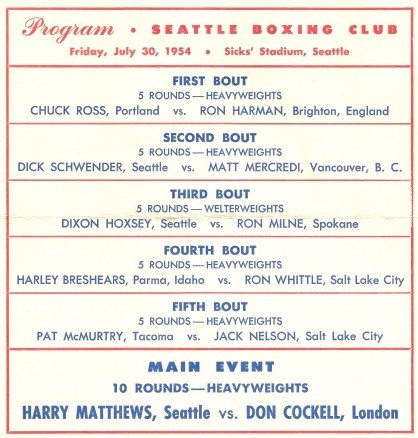
But Matthews felt his career left a lot to be desired. No matter how many guys he sent to the canvas, he never became a contender. Nor did he ever make much money, that because he never had much of a following, and that because he did not have an entertaining style.
Rather than attack opponents, Matthews preferred to jab and dance. In addition, the laid back, articulate Matthews didnt fit anyones concept of a fighter. Said Bill Sears, who later worked publicity for Seattle University and the Seattle Pilots: He was a real gentleman.
Following the 17th fight Forbes made for him, a sixth-round KO over Henry Lee on April 8, 1949, at Civic Auditorium, Matthews came to a decision: His career had flattened, he had run up debts, and he needed to replace Forbes, who hadnt done anything to enhance Matthews stature or skills.
Matthews needed a manager on the order of Nate Druxman, who had promoted a string of championship fights in Washington state, including the July, 1938, middleweight extravaganza between Hostak and Freddie Steele. But Druxman had retired and Seattle had no other promoter capable of infusing life into Matthews career.
A friend of Matthews, Sammy Casmir, told Matthews that he knew an excellent manager in Chicago named Jack Hurley, and offered to travel to the Windy City with him and make the introduction.
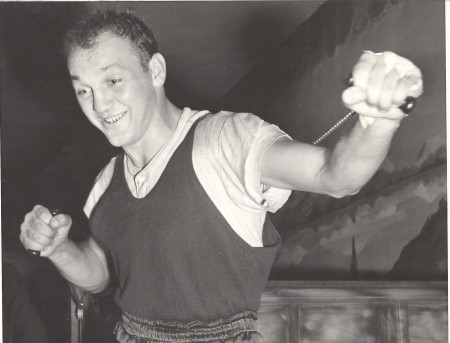
Hurley, who had been snooping around for another boxer following his successful promotion of the Tony Zale-Rocky Graziano fight, found him when into his office one day strolled Harry Kid Matthews.
Matthews took an almost immediate dislike to the tall, caustic, fast-talking Hurley, who billed himself The Professor, especially after Hurley demanded 50 percent of Matthews winnings, a sum Matthews considered beyond exorbitant.
Fifty percent is too much, Matthews argued, in a conversation recounted by Arthur Daley of the New York Times in 1952. I cant afford it.
How much are you earning now? challenged Hurley.
Nothing, replied Matthews.
If I get half of that, I sure wont get fat, will I?”
But Im the one doing the fighting, protested Matthews.
What fighting? Hurley demanded to know. You havent been able to make a living out of it in 10 years of trying. You dont even know how to fight. Ive proven myself a successful fight manager. What actually is happening is that youre getting 50 percent of me. For that, Im going to teach you how to fight and publicize you and maneuver you into matches where youll make big money. You dont know how lucky you are.
A 52-year-old native of Fargo, ND., Hurley tried to become a boxer himself after serving with the U.S. Armys First Division in World War I. But he had poor eyesight and athletic skills and eventually gravitated into promotion and management. His first break came when he discovered Billy Petrolle, a fellow Fargo native, and the most notable in a string of successful fighters that Hurley tutored.
Many of the skills Hurley utilized through a long career of overseeing the fortunes of pugilists came as a result of his 12-year association with Petrolle, The Fargo Express, who compiled a record of 120-25 and fought for the world lightweight crown in 1932.
Following Petrolles retirement, Hurley moved to Chicago, where he continued to manage a stable of fighters, only a few of championship quality. For a five-year period in the 1940s, Hurley toiled as chief promoter at the Chicago Coliseum, his most notable show occurring on Sept. 27, 1946, when he staged the Graziano- Zale world middleweight title fight. That drew a gate of $422,000, the largest of its time at an indoor arena.
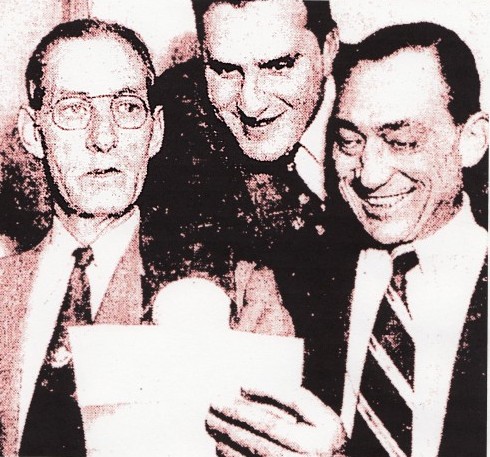
After Hurley informed Matthews that it would cost $20,000 just to teach him how to fight, and that Hurley would absorb that cost as an investment in Matthews, Matthews reluctantly agreed to accept Hurleys 50-50 terms.
Hurley then began to tweak Matthews style with the aim of turning him into a counter puncher. After a few months of working with Matthews, Hurley arranged for Matthews to fight journeyman George Sherman so that Hurley could assess what kind of fighter he had, and what else he needed to do with him.
On Sept. 9, 1949, Matthews trounced Sherman in a 10-round decision at Chicagos Marigold Gardens Arena, after which Matthews told Hurley that he felt he had made a lot of progress in the short time that he and Hurley had worked together. But Hurley lit into Matthews, saying, That was the most disgraceful thing I ever saw. If you did that on a street corner, a cop wouldnt even break it up.
Hurley determined that Matthews, like many boxers, had been taught by a bunch of amateurs. Noting that Matthews was not much of a puncher, Hurley taught him how to hit, how to more effectively use his balance and leverage, and how to be unafraid in the ring.
The main thing I taught him, Hurley said, is absolute contempt for his opponent.
Despite his criticisms of Matthews style, Hurley saw enough potential in his protégé that he moved to Seattle, where he began a long residence at the Olympic Hotel, and started molding Matthews into a light heavyweight contender.
Hurley kept Matthews busy throughout 1950, arranging 14 fights on Matthews behalf. Matthews won them all, most by KO or TKO. Matthews defeated nobody in particular, but that was by Hurleys design.
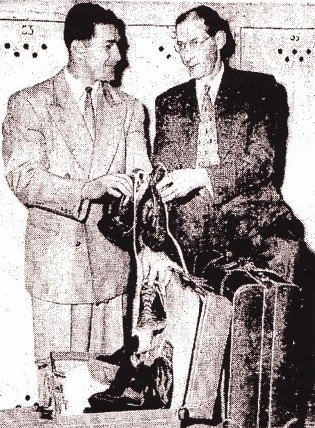
“I made sure he (Matthews) didn’t fight any great fighters, Hurley told Sports Illustrated some years later. I picked them mostly by their styles, guys that had styles just right for Matthews. So all of his fights appeared to be sensational. I wouldn’t put him in there with a fencer and a runner, because this guy isn’t going to fight, and he isn’t going to let you fight.
Hurley had a reputation as a great teacher, a fact not even in dispute by those who considered him a cantankerous blowhard. Although he had never boxed himself, or trained a world champion, Hurley had a remarkable understanding of how to box. He had what has been called a rare, freakish ability to mimic other fighters, which enabled him to school his own fighters in how to best contest an opponent.
I was a natural mimic, Hurley once said. I would watch somebody fight one round and I could imitate him right down to the last technical thing. I would know how to move my feet, where to apply the leverage, everything. This was automatic to me.
At various times in his life, Hurley desired to be a boxer, a musician, a major league baseball player, a lot of things he could not become. But teaching boxing, managing his boxers, promoting his fighters, making lucrative matches for them those were things he could do as well as anyone.
By the time Matthews runs him down and gets him cornered where he might nail him, the guy jumps into a clinch and the referee rescues him, and he’s off and running again, Hurley added to his explanation of how he lined up opponents for Matthews. This doesn’t make for a good fight or good box office, and even if Matthews wins he has hurt his earning power.
So I always picked fighters that really wanted to get in there and fight and lick my fellow, and while they were doing this my fighter was counter-punching and looking great.”
“You gotta remember that Harry was a pretty good fighter and a tough body puncher, said George Chemeres, who occasionally helped Hurley train Matthews. But there were certain kinds of opponents that Hurley would not let Matthews be in the same town with (notably Archie Moore).
Hurley took Matthews to New York for the first time in early 1951 (March 3) for a 10-rounder against Irish Bob Murphy at Madison Square Garden. Hurley planned to use the fight as the launching point for a campaign designed to get Matthews a shot at a title, light heavyweight or heavyweight.
The New York press ridiculed Hurley for making the fight, figuring Murphy, a knockout artist, would win easily. Hurley figured otherwise. Hurley sized up Murphy, a southpaw, as a guy who tried to turn every trip to the ring into a street fight, and not many could beat Murphy in that kind of a brawl. But as a boxer, as a tactician, Murphy, in Hurleys opinion, didnt have much going for him. Hurley also knew that Matthews feasted on southpaws.
He (Matthews) had an instinct for fighting them, and he knew how to beat them, because I taught him, Hurley said.
Part of the Friday night Gillette Cavalcade of Sports TV series so popular in the day, the Matthews-Murphy pairing became a memorable show. The two fighters banged on each other from the opening bell and never let up until 10 rounds were complete.
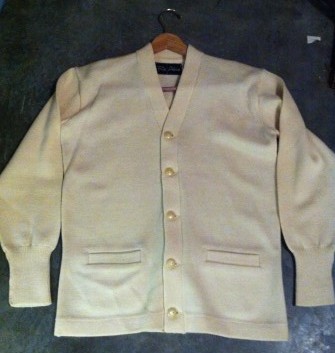
As Hurley suspected, Matthews got the better of it, scoring a unanimous decision. Following the verdict, Murphy told New York newspapers, He (Matthews) is terrific. Its like being hit with a freight train.
W.C. (Bill) Heinz, who later wrote Run To Daylight (biography of Vince Lombardi) and MASH, which became a Robert Altman film and a long-running TV series, covered the fight for the New York Sun. Heinz wrote, Matthews would belt Murphy so that the cops with duty out on Eighth Avenue must have felt it. It was the greatest exhibition of body punching I have ever seen.
With Matthews having beaten a name opponent, Hurley made it his mission to use the victory to parlay Matthews into a title contender, or at least create the impression that Matthews was a contender (more likely the latter). To that end, immediately after Matthews win at Madison Square Garden, Hurley sent out bushels of Matthews-related news clippings to big-city dailies around the country, and convinced Ring Magazine (and other publications) to put Matthews on its cover.
Over the next 14 months, Hurley booked 17 fights for Matthews, all designed to add quality wins to the Matthews portfolio while doing the least amount of damage to his fighter.
Hurley took Matthews through Portland, Milwaukee, Boise, Cleveland, San Francisco, St. Paul and Omaha, anywhere where he could locate a suitable but reputable cupcake.
At each stop, Hurley ratcheted up his rhetoric about Matthews status as a contender and, through dozens of interviews, simultaneously sold himself as a larger-than-life character out of another era (Hurley loved to regale sports writers by telling them tales while drinking the best Scotch whisky, and he wasted no time sipping it).
Nobody yet bought into Matthews, but everyone, particularly the New York media, bought into Hurley, who frequently reinforced a dictum laid down by the late John Lardner, who said he liked boxing “because frequently what happens outside the ring is more interesting than what goes on inside it.”
There arent many left, but Jack Hurley positively belongs to that fast-vanishing breed of men, the genuine fight manager, wrote New York Times columnist Arthur Daley, adding, Hurley is a throwback to the great ones of old. Hes a teacher. In fact, he occasionally is so immodest as to refer to himself as The Professor. If he so desired, he could call himself the Arch Manuverer and The Publicity Hound Beyond Compare.
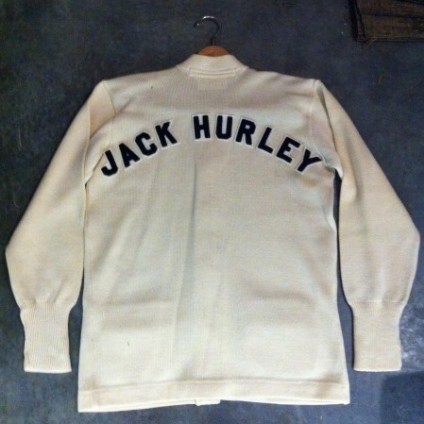
Hurley fascinated Seattle columnist Emmett Watson, who described Hurley as “This dyspeptic loner. He hated women and called them ‘these little creatures.’ He scorned doctors, indeed the entire medical establishment, but let them find a new disease and Hurley would have it the next day. Jack loved to ‘scotch it up.’ He was ornery, conniving, surprisingly generous, irascible, quick to anger in the company of fools. He played every sharp angle he could and because he was colorful and quotable, he could almost take over the sports pages when he wished.”
Hurley never needed a super fighter, opined Sports Illustrated. All he needed was a property, and Matthews, game and willing to learn, was it. Traveling the Northwest like a couple of drummers, Hurley and Matthews built up a legend that still has boxings public-relations experts scratching their heads in amazement.
Hurley frequently demanded to know why the World Boxing Club ignored his fighter. He demanded to know why the big-city dailies refused to acknowledge his champion in the making, implying that the newspapers were shamelessly shirking their civic responsibility to report the truth to the public.
After each Matthews victory, Hurley purchased dozens of local newspapers and sent accounts of Matthews wins to newspapers around the country (heavy emphasis on Chicago and New York) and leading boxing writers of the day (by Hurleys own account, he spent an average of $5,000-$6,000 per year buying newspapers and postage stamps).
Hurley brayed so often and so furiously that he got fans to flock to Matthews fights to witness his martyred hero. And, perhaps inevitably, Hurley pushed the media into questioning the credibility of boxing officials, who had yet to pay any heed to Hurleys uncrowned champion.
This was as adroit a bit of managerial magic as ever was perpetrated, wrote Arthur Daley of the New York Times.
As the public clamor over Matthews rose, Hurley began negotiations with the Sugar Ray Robinson camp, ostensibly aimed at matching Robinson and Matthews for the world middleweight title. That was not a match Hurley wanted or expected to get, but it stirred the media pot and kept Hurley’s options open.
Somehow, in the spring of 1952, Hurley found the ear of Washington Senator Warren G. Magnuson and convinced Magnuson that an outrage was being perpetrated on the sporting public: boxings official discrimination of his fighter.
Hurley whipped up such a ballyhoo that Magnuson himself began to argue about the injustice of Matthews failing to receive a title shot. Finally, Magnuson (and other members of the state congressional delegation) threatened to investigate the World Boxing Club if it didnt set matters right on behalf of the countrys most aggrieved citizen, Harry Matthews.
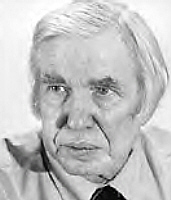
Wrote author Frank Graham: “By word of mouth, person to person or on radio or TV, in letters to newspapers or interviews with sportswriters, Hurley created such an uproar that it reached the halls of Congress where Senators and Representatives howled that Matthews was being discriminated against.”
Wrote John Mac-Adam of the Londons Daily Sketch: “Mr. Hurley can sling words faster than Matthews can sling punches. Hurley convinces you against your will that Matthews is the fighter of the century while you think in your heart he is not.”
Faced with a Congressional investigation, a cowering WBC moved quickly to douse the political storm by persuading manager Jack “Doc” Kearns to agree to give Matthews a shot at his fighter, Joey Maxim, the defending light heavyweight champion. That seemed to settle matters.
It didnt. Hurley didnt want the light heavyweight title; he wanted the heavyweight title. After declaring that Matthews was no longer a light heavyweight, Hurley commenced discussions with the Joe Wolcott camp about a title shot, completely ignoring Marciano, just coming off a knockout of former champion Joe Louis.
Later, when it became clear that Hurley and Matthews would have to go through Marciano if they ever wanted a shot at Wolcott, Hurley began a public dismissal of Marciano, making cracks like: “How about Marciano, this great star they’re keeping in cellophane? Did he or did he not stink out the joint with Lee Savold?”
On May 19, 1952, in something of a gamble, Hurley matched Matthews against Rex Layne, a heavyweight who far outweighed Matthews (198 ½ to 183 ½) and the cover subject of the May, 1951 issue of Ring Magazine. The gamble (in Hurleys mind it probably wasnt a gamble at all) paid off. Matthews recorded a unanimous 10-round decision at the Pacific Livestock Pavilion in Portland.
With that win, Hurley again demanded that Matthews receive a heavyweight title shot, and this time the WBC listened.
The sanctioning body reluctantly blessed a Matthews-Marciano “elimination bout” on June 7, 1952, announcing that the winner would take on Jersey Joe Walcott for the heavyweight championship. Hurley had trumped the WBC, which bowed to public pressure spawned entirely by Hurleys fertile imagination.
Although Hurley figured he had pulled off a coup, his booking caused feverish debate among Matthews’ followers across the country.
“Some of the people who had campaigned most ardently for Matthews (to get a title shot) declared themselves disillusioned,” noted Emmett Watson of the Seattle Times.
Hurley even split Matthews supporters in White Center. Some were elated, but many expressed dismay and apprehension. The White Center News noted that Hurley’s decision to go after the heavyweight crown was “doubtless the most discussed subject in fight circles today,” with many fans feeling that Hurley was letting his feud with the WBC get in the way of his better judgment.
While most in the Northwest gave Matthews no chance, everyone recognized the fight was Matthews’ one chance at glory, and Seattle grew giddy over the prospect in the month leading up to the fight. Both the Times and Post-Intelligencer ran stories every day during that period, mainly because Matthews had become such a likable celebrity.
The Seattle sports scene at the time didn’t have a whole lot going for it. The Seattle Rainiers had won a Pacific Coast League title in 1951, but the University of Washington had a moribund football program. There were some crew and hydro races, but the largest-paid sports event was UW football’s spring-practice game.
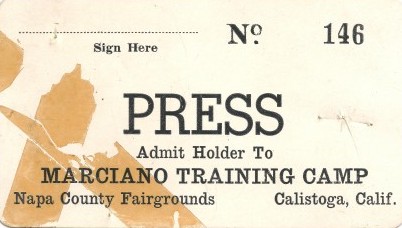
“Billy Graham turned us down,” Emmett Watson wrote, remarking on the fact that Graham had balked at conducting one of his crusades in Seattle. “We didn’t even qualify for major-league religion. Into this entertainment vacuum came Harry the Kid, a boxer.”
As former Seattle Post-Intelligencer sports editor John Owen wrote: “He was our fighter. People could identify with Harry.”
The White Center News added, hopefully, that Hurley just might once again be “playing his cards smart,” adding, certainly as fight day approached, talk about Harry and his career was easily the favorite topic of “conversation around most of the dinner tables of residents hereabouts.”
The consensus: In accepting a heavyweight elimination fight with Marciano instead of a light heavyweight fight against Maxim, Hurley had pushed Matthews where he should not have gone.
Observed the New York Times: Nobody knows if Matthews can really fight, but Hurley made the boxing world think he can. The Kid will now fight rock-fisted Rocky Marciano in Yankee Stadium in a bout of such fierce attractiveness that it may draw more than a half million dollars. Who made it so appealing? Who made Matthews? The answer is the same for both Jack Hurley.
On the morning of the fight, another story in the New York Times under the byline of Joseph Nichols, contained these words: Directly after Rocky and the Kid cease belaboring each other, calm will return to New York. The local sports scene will be tranquil once more, and fans will be able to appraise athletic conditions without a gale blasting past their ears. For after tonight, Jack Hurley will have to keep quiet.
Jack has been spouting volumes and volumes of conversation with Matthews as the central figure. But so effective has Jack been in his task, and so much eloquence has he displayed, that a considerable segment of the boxing world has come to consider Matthews a secondary factor in the proceedings, almost completely overshadowed by his ebullient manager.
Indeed, so turbulent has the Hurley Hurricane become that the placards advertising the fight bear a picture of Hurley sending out thought waves to his protégé. Of course, Marcianos picture is on the posters, but theres nobody telling him what to do.
Hurleys oratory has been so forceful that fight fans have been unable to avoid it. And the sage pilots storm has been skillfully seeded so that nobody really knows whether Matthews can fight or not.
If it were not for the great amount of space grabbed by Hurley through his interminable soughing, tonights clash would be an obscure, lightly attended item. But Jack blew it up into major proportions, and his task will be temporarily ended weather permitting.
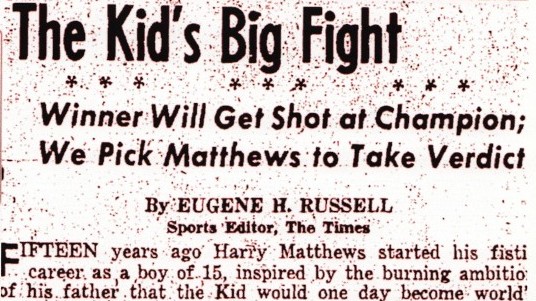
Added famed New York restaurant proprietor Toots Shor: “If I listened to Hurley for a week, I’d take off 30 pounds and fight Marciano myself.”
Matthews had won 67 times in 70 fights when he stepped into the ring to face Marciano, a fighter the New York Sun called a throwback to the dark ages. But to the shock of the 31,800 on hand, which included Magnuson and Gen. Douglas MacArthur, Matthews, an 11-5 underdog and outweighed by more than eight pounds (187 ½ to 179), took the first round easily.
Marciano came out swinging wildly, trying to end the proceedings with a punch or two, but Matthews met Marcianos charges with solid left jabs flush on Marcianos face. Following Hurleys instructions like a straight A student, Matthews avoided the ropes, stayed in the center of the ring, landed combinations, deflected Marcianos power punches, and tied up Marciano repeatedly. Late in the round, Matthews opened a cut above Marcianos left eye that would have blossomed into a mouse had the fight continued for any length of time.
The second round started out much the same way. But perhaps enervated by his first-round success, Matthews apparently got the idea that he could put Marciano away, rather than let Marciano put himself away. In any case, Matthews began fighting the kind of fight that Marciano wanted to Hurleys great exasperation.
Just past the two-minute mark (2:04), Marciano landed a left jab, which buckled Matthews knees and sent him reeling toward his corner. Then a devastating left hook landed on Matthews jaw. Matthews head struck the lower ring rope in his corner, and he slid into a reclining position.
For a few seconds, Matthews stretched out under referee Ray Millers count. As it reached five, Matthews tried to pull himself together, but didnt know what he was doing. At the count of eight, Matthews rose to a half-crouch, trying to stand before Miller completed the count to 10. Instead, Matthews listed inertly to port, draped himself over the lower ring rope, thoroughly knocked out.
Matthews took his pummeling in stride, calling it just one of those things. Matthews even joked that he thought he had earned a draw with Marciano on the grounds that, He won a round and I won a round.
Matthews defeat irked Hurley, who had bet $10,000 on his fighter to win.
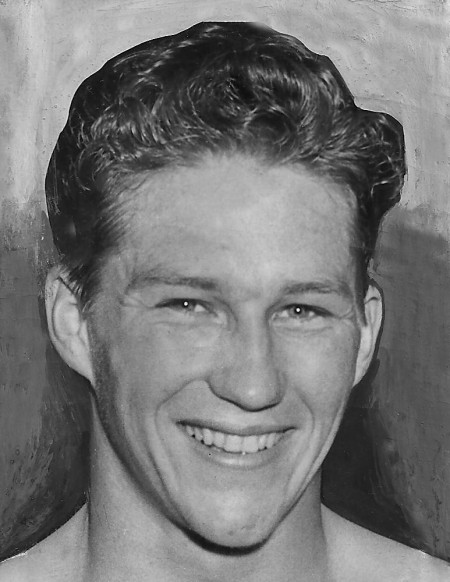
“He went amateur on me,” Hurley barked to reporters after the fight, referring to the fact that Matthews had abandoned Hurleys fight plan and elected to trade punches with Marciano.
In later years, Hurley tried to absolve himself for Matthews staggering defeat, accusing Matthews of having a glass jaw, and getting psyched out by Yankee Stadium.
“Matthews went out for the second round, Hurley told Sports Illustrated in 1961, and all of a sudden he breaks out of a clinch, and he realizes he’s fighting in Yankee Stadium in front of all those people, and he just gets frozen with fear.
The guy (Marciano) threw a cuffing left at him and Matthews leaned back, and it hit him right on the chin. There was nothing on the punch, but Matthews leaned back, scared to death, and then the fellow threw a second cuff and Matthews couldn’t move. He could have stayed close all night, but he leaned back and he got hit and he got knocked out.
When asked if he had overmatched Matthews, Hurley said, When I got him, Matthews couldnt take a punch, everybody knows that. But he got along, didnt he? So you know he must have learned how not to get hit.
Except in the Marciano fight, after which Hurley seemed to feel sorrier for himself than he did for Matthews.
Let me tell you, it’s a long way from that ring to the dressing room at Yankee Stadium, and all the way back people are saying, ‘Where’s your great fighter now, Hurley?’ and there I am bleeding in my shoes.”
Most boxing writers who had sat mesmerized during Hurleys pre-fight oratory jabbed him hard in the aftermath, mainly accusing him of looking out for his own interests rather than his fighters despite the fact that Matthews earned a career-high $50,000 payday.
Without thinking like either a competent promoter or manager, Hurley simply, stubbornly wanted that fight, wrote W.C. Heinz of the New York Sun. “The Marciano fight was no less a defining moment for Jack Hurley, as well.
Whether from the standpoint of a manager or promoter,” wrote John Owen of the Seattle Post-Intelligencer, “a fight against Rocky Marciano made absolutely no sense.”
Marcianos blows knocked most of the momentum out of Matthews career. After fighting 15 times in 1951 as a prelude to his brief minutes in Yankee Stadium, he fought just 13 times over the next five years. During that span he lost three times to Don Cockell, a man who outweighed him by 30 pounds, two of those in 1954.
In 1955, Matthews won four more fights, all with Hurley in his corner, including one against a fading Ezzard Charles, which convinced Matthews it was time to retire.
“I could see every punch coming. I felt sorry for him (Charles), Matthews said. That’s why I got out. I wanted to stop before I became like him.” And so he did, at age 32.
In 1957, with predictable newspaper fanfare, Matthews joined the King County Sheriff’s Office as a deputy sheriff and made his first arrest by taking down a man who was creating a disturbance in a White Center tavern.
Later, he operated the Bell Pine Tavern in Seattle and opened a rental equipment and welding business in Everett. He also became a novice inventor. While working as a bartender, he created a motorized cart that he could ride behind his elongated bar and deliver drinks.
For a brief time in 1978, Matthews trained an up-and-coming Everett heavyweight, Ibar Arrington, who had a decent run until he became a born again, quit boxing and moved out of state.
A life-long bachelor, Hurley never trained a champion, but had two additional spotlight moments. Five years after the Marciano-Matthews fight, Hurley was asked to locate an opponent for world heavyweight champion Floyd Patterson. Hurley shocked everyone by selecting Pete Rademacher, a man, trained by George Chemeres, who had never fought a professional fight. Like Matthews, Rademacher lost quickly.
Thirteen years later (Nov. 18, 1970) Hurley maneuvered a not-ready-for-prime-time Boone Kirkman of Renton into a fight against top heavyweight contender George Foreman at Madison Square Garden. Kirkman also lost quickly.
Hurley received the same criticisms for making those matches as he had for forcing the Marciano-Matthews match. Hurley never second-guessed his decisions and, in fact, defended those matches and criticized his boxers.
Following Matthews loss to Marciano, his personal relationship with Hurley cooled. All evidence suggests that Hurley never got over blaming Matthews. Matthews got over it.
“Jack did a good job for me,” said Matthews. “Above all, he was a great trainer. I owe him a lot.”
Hurley conjured up couple of big promotional ideas in his later years that went nowhere. He lobbied to stage a world heavyweight title fight at Husky Stadium. He also initiated talks with the aim of having basketball star Wilt Chamberlain fight Muhammad Ali (they even had promotional pictures taken together).
The fights Hurley promoted in Seattle pumped millions of dollars into the local economy, leading some of Seattle’s grateful restaurateurs to throw him an elegant testimonial dinner at the Olympic’s Grand Ballroom (Emmett Watson called Hurley “a one-man Tourist and Convention Bureau”). Rather than revel in the attention, Hurley expressed disgust.
“Fifteen dollars a smash for this thing?” Hurley snapped. “I’ve put on a few swindles myself, but never one as bad as this.”
When Hurley died of natural causes in Seattle in 1972, he did so as a real-life boxing legend and a fictionalized one as well.
In 1958, W.C. Heinz, the former New York Sun reporter, published a novel titled The Professional, which focused on a fighter pursuing the middleweight championship. Ernest Hemingway called it the only good novel Ive ever read about a fighter, and an excellent novel in its own right. Heinz based one of his main characters on Jack Hurley.
Matthews sent a floral arrangement to Hurleys funeral, designed in the shape of a boxing glove. By his request, Hurley was buried in Holy Cross Cemetery, West One-half, Lot 35, Block 8, Old Section, Fargo, ND., next to his mother.
Matthews lasted three more decades. In 2003, wracked by dementia, and victimized by a live-in housekeeper who ripped him off (to the tune of $15,000), he went to California (Oceanside) to live with one of his daughters, Connie OKeefe. She eventually moved Matthews to an assisted-care facility, where he died of heart failure on Feb. 21 at the age of 80.
—————————————————-
Check out David Eskenazis Wayback Machine Archive. David can be reached at (206) 441-1900, or at seattlesportshistory@gmail.com

5 Comments
I’m looking forward to reading this. Hope you fix this soon.
The story should be viewable now. We obviously have a “bug” in the system. Every article defaults so that “Everyone” can view it. We have to manually select “Paid Members Only” and we never do that. Sorry for the inconvenience.
In the 60’s. King TV used to do a weekly or bi-weekly segment with Hurley commenting on sports. I believe Rod Belcher would nervously ask him topical questions pertaining to sports and Jack would ramble on and on, eventually redirecting the discussion back to Boon Kirkman. The segment was a thinly veiled vehicle for Hurley to promote Kirkman. All the current crop of boxers, like Ali. were bums, he would say – all except for “his Boone.”
Well, we all know what happened to Boone at Madison Square Garden against George Foreman. Classic Hurley.
I’m glad to see the Mariners winning 10 of their last 14 games, even if half the games have been against KC. I’ll take what we can get.
If you know something about baseball, you’d know KC actually has a really good offense.